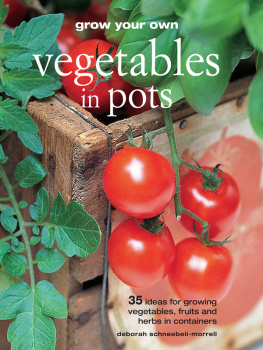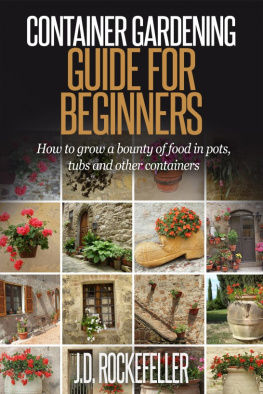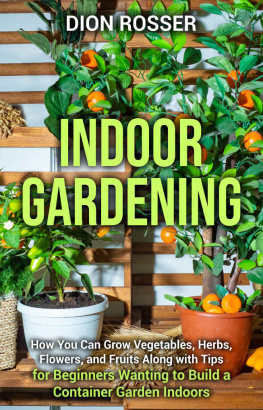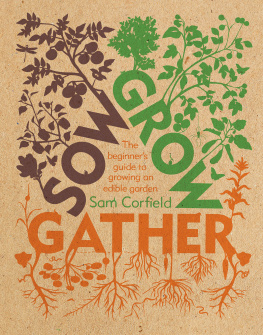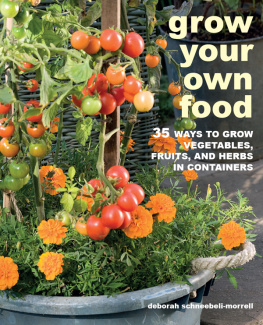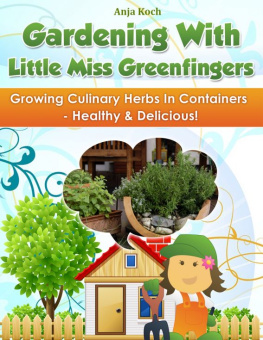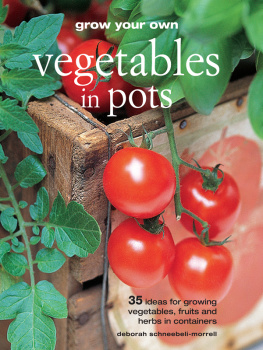grow your own
vegetables in pots
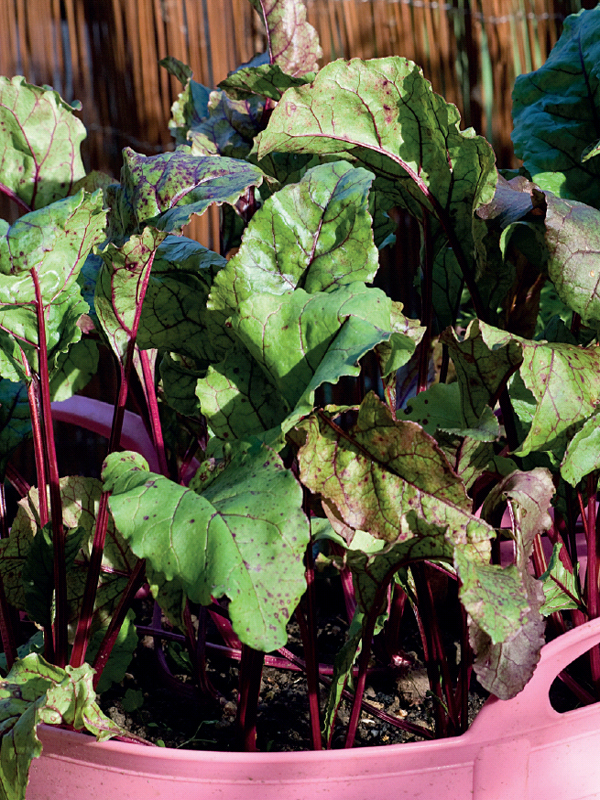
grow your own
vegetables in pots
35 ideas for growing vegetables, fruits and herbs in containers
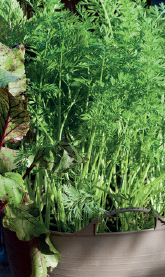
deborah schneebeli-morrell

First published in 2009 by CICO Books as Organic Crops in Pots
This paperback edition published in 2010 by CICO Books
An imprint of Ryland Peters & Small 2021 Jockeys Fields, London WC1R 4BW
www.cicobooks.com
10 9 8 7 6 5 4 3 2 1
Text Deborah Schneebeli-Morrell 2009, 2011
Design, photography and illustration CICO Books 2009, 2011
The authors moral rights have been asserted. All rights reserved. No part of this publication may be reproduced, stored in a retrieval system, or transmitted in any form or by any means, electronic, mechanical, photocopying, or otherwise, without the prior permission of the publisher.
A CIP catalogue record for this book is available from the British Library.
eISBN: 978-1-908862-37-2
Paperback ISBN: 978-1-907563-09-6
(Hardback ISBN: 978-1-906525-28-6)
Printed in China
Project editor: Gillian Haslam
Text editor: Henrietta Heald
Designers: Roger Hammond and Roger Daniels
Photographer: Heini Schneebeli
Illustrator: Jane Smith
Dedication
To my dear friend Jehane Markham, a pioneer of organic food and a thoughtful gardener.
Authors acknowledgements
Thanks to all my friends, gardeners, vegetable growers and allotment holders who shared their gardening knowledge and who allowed us to photograph in their plots. In particular, Mick Rand, Bill Saunders, Chris Jackson, Alan and Anthea Stewart, Helen Scott Lidgett, Jill Patchett and Gloria Nicol.
I am indebted to Heini Schneebeli for his perseverance and skill in photographing the projects in the book during a particularly poor summer for veg growers.
I would like to thank John Levis of Bygones at Whitehall Garden Centre in Lacock Wiltshire for lending some props and recommend a visit to his outdoor shop for inspiration and a source of lovely vintage domestic and garden objects.
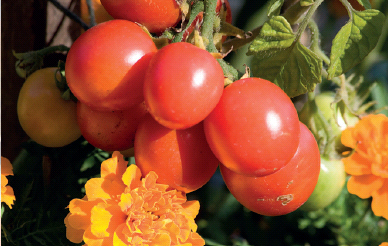
Contents
Introduction
Increasing concern about climate change has made us more conscious of where our food comes from and how it is produced. We know about the unwelcome effects of industrial-scale farming and the negative influence that humans have had on the environment. Sustainability and green issues are at the forefront of many peoples minds, and there is a general desire to live healthier lives while lessening our impact on the planet.
We have learned that it is better to eat seasonal vegetables that are locally grown rather than those that have been flown thousands of miles around the world to reach our shops and markets. As a result, more and more of us are growing our own. One great advantage of this is that it allows us to harvest crops minutes before eating or cooking them and really understand the meaning of the word fresh.
Vegetables deteriorate very quickly after they are picked because the natural sugars start to turn to starch, and by the time commercially grown vegetables reach the shops the flavour is already greatly diminished. That is why frozen peas (which are frozen immediately after harvest) are superior in flavour to so-called fresh peas, which may not reach the shops until a day or two later. Dont just take my word for it. When you start to grow your own vegetables, do a little experiment. Pick and eat a lettuce or carrot or whatever you grow and then eat a shop-bought version, and you will have your proof theres no comparison.
Pesticide residues, which are still found in commercially grown vegetables, can be harmful to human health, so if you want to be sure that your produce is pesticide-free, you need to cultivate it yourself. Shop-bought organic vegetables are relatively expensive another good reason to grow your own.
Gardeners who grow their own produce are doing real work the kind of work that originated with our ancient farming ancestors. Given such a long history, you might be discouraged by the thought that there is too much to learn, too much tradition to absorb, but this knowledge is widely spread and many people are happy to share their experience, whether by word of mouth or through books and manuals.

Chillies come in so many different varieties and are well suited to being planted in colourful empty olive-oil cans.
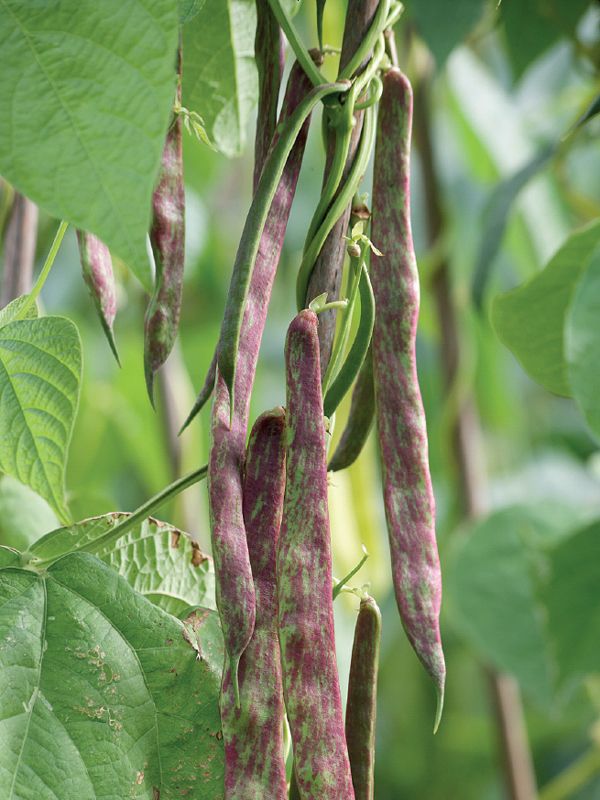
Borlotti beans quickly climb up tall canes, producing a heavy crop of speckled red pods. These are left to ripen on the vine and are harvested by opening the dried pods.
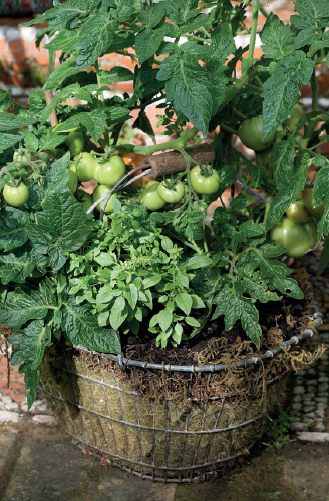
This old, sturdy, wire potato harvesting basket makes a useful container for growing tomatoes.
It is a fact of nature that plants will grow. Your role is to help to create the right conditions to encourage and enhance that process.
Urban gardening
There is a widespread trend among city-dwellers to grow vegetables in the smallest spaces on windowsills and balconies, in patios and back yards. Unlike many fashions, this one is really welcome. It represents a movement away from the processed and the packaged, away from mass production and shopping and, importantly, it challenges the domination of supermarket culture. Do we really need particular vegetables and fruit to be available all through the year? Does a strawberry at Christmas, grown in a huge industrial greenhouse, bear any relation to an indigenous one grown in the open air and ripened by the sun? Do we want to buy a little packet of clingfilm-wrapped French beans cultivated in a far-off place and sprayed many times? And do we want to pay high prices for these dubious fruit and vegetables?
More and more people are saying no to these questions. Among them are those of us who do not have much outside space but want to grow our own and enjoy some of the advantages that were traditionally gained from gardening on a vegetable plot or in a larger garden. This is easier than it sounds; many vegetables are adaptable and can be grown in reasonably compact containers.
Tomatoes, perhaps the most adaptable crop, have long been cultivated in the ubiquitous growbag, often perched on a small balcony or even a windowsill. With its flat-sausage shape and garish plastic skin, a growbag is an ugly object; it is also difficult to water and all sorts of even uglier gadgets have been designed as growbag accessories to help watering and to help prop up the tomato vine. The best way to treat a growbag is to cut it open and use the compost in a more attractive container.
Gardening for children
If you have children, encourage them to become involved in cultivating the produce they will eventually eat. This will teach them where and how food is grown, and they will come to realize that treating the earth with care and respect can bring delicious fresh rewards. Sowing seeds and watching them germinate and thrive is a real pleasure, and this small world of growth, harvest and renewal that you have created will connect you and your family to the vast ecosystem of nature.
Next page
